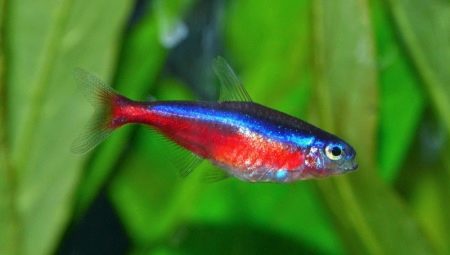Breeding of various fish is very popular. But not all species of aquarium animals are so easy to handle. The red neon fish definitely deserves attention - you just need to know its specifics.
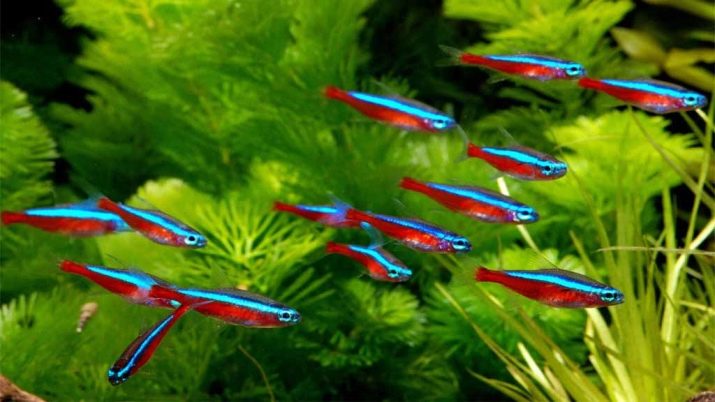
Features
Red neon is one of the most beautiful and sought-after aquarium fish. Its beauty is best revealed in the group that lives in a richly overgrown aquarium. There, these flocks will look as attractive as possible. From a representative of the same biological group - ordinary neon - red is distinguished by a large colored strip. She goes just below the bluish line, located exactly in the middle of the body.

Red neons were discovered and described by ichthyologists in 1956. In nature, they inhabit South America, where they are found mainly in slow rivers flowing through forests. The surrounding tropics are very dense, and therefore ponds are almost deprived of sunlight. Most often, flocks of red neons are grouped at an average depth level. The preferred natural food is worms and other insects.
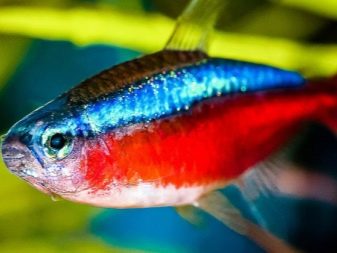
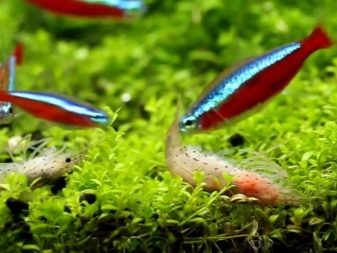
The vast majority of copies sold in our country are grown artificially. Only very few individuals are caught in the wild. The greatest length of neon is 0.05 m. It can live up to 3 years. Containing this breed is more difficult than the ordinary subspecies, since it makes very high demands on water quality.
The elongated body of red neon from the sides seems to be flattened. Its shiny back is shimmering in an olive green tone. Large scales are very visible in appearance. The bluish-green color of the eyes and the transparency of the fins are characteristic.The fish chooses places for spawning where there is no bright direct light.


Compatibility
Red neon in the aquarium should not be kept alone. Like other members of the tetra group, he needs the opportunity to communicate. The best results in aesthetic terms are achieved when 15 or more pieces swim at a time. Yes, and the fish themselves in such a large flock will be more comfortable. Optimal neighbors, according to ichthyologists and experienced aquarists, are:
- prigella;
- erythrosonus;
- black neon;
- tetra von rio.
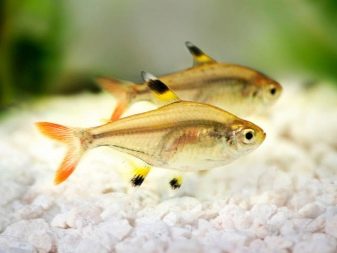
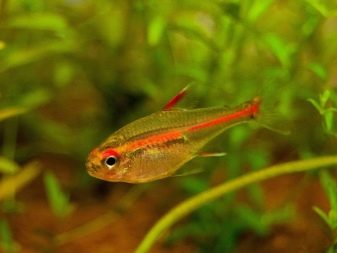

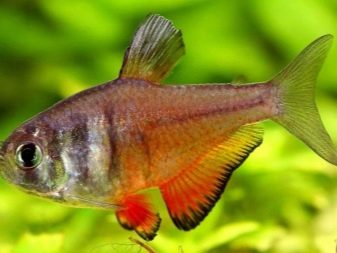
Neon neighbors in the aquarium should live normally in water at 18-24 degrees and with a hydrogen index of 5.5 to 7.5. Categorically it is impossible to settle this breed in one vessel with large predators and scavengers. Otherwise, a peaceful and calm neon will suffer very much - and the cliff of the fins is still minimal damage.
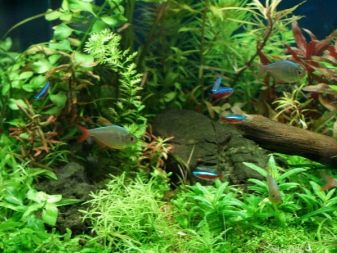
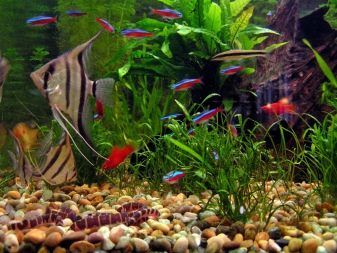
It is undesirable to introduce fish of different sizes into one aquarium: because of this, stress begins, and even the characteristic bright color may disappear.
A very important circumstance is the similarity of temperaments. If the activity of species varies, they are unlikely to get along well. It is possible to populate neons with such fish:
- parsing;
- cardinals;
- guppies;
- corridors;
- barbs.
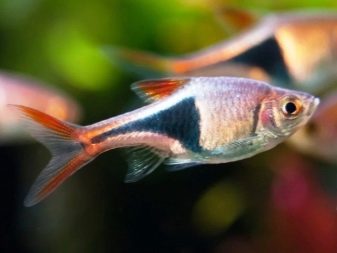
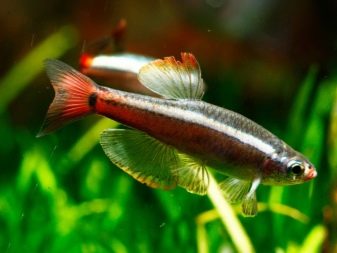

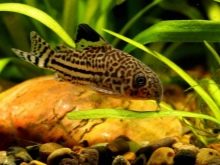
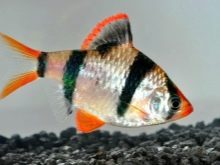
Growing conditions
Red neons are recommended to get experienced aquarists. In the hands of beginners, they often die. Such fish, due to their modest size and calm nature, can greatly suffer from large aquarium inhabitants. Note: when neon is contained in acidic water with a little hardness, it looks much brighter than usual. Another method for visually emphasizing the merits of a fish is keeping it in a densely overgrown aquarium, where they put dark soil.
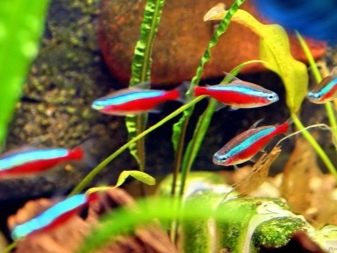
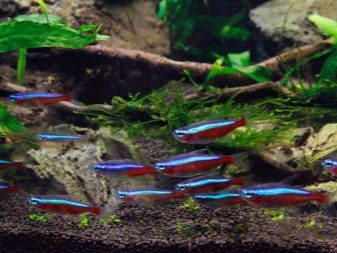
Lighting should be moderately intense. A competent approach can guarantee the long life of red neon. He will hardly be ill either. However, in aquariums with unstable environments, fish die quickly.
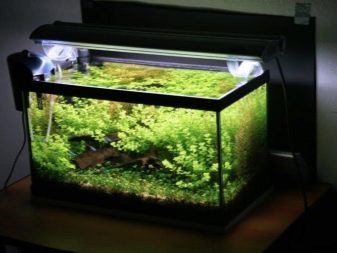
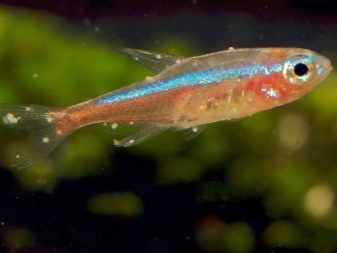
Important: like the "ordinary" brother, this subspecies is prone to neon disease, which is incurable and inevitably leads to death.
The acid-base balance of less than 6 is critical for the content of red neon. At the same time, water hardness is strictly limited - the maximum allowable rate will be 4 dGH. If the stiffness is greater, the color fades, and the total life time is reduced. Normal water temperatures are not lower than 23 and not higher than 27 degrees.
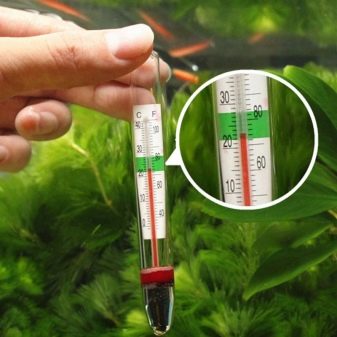
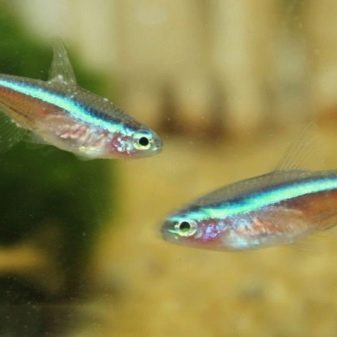
The main requirement when caring for such fish is the stability of the conditions. Even if they are broken, they must be corrected carefully and gradually. Any rush here can cause additional harm to animals. After all, their organisms, in fact, are subjected to additional shake. A sharp change in environmental parameters in new aquariums is especially dangerous. Light should be moderately bright, obscured by abundantly growing floating cultures.
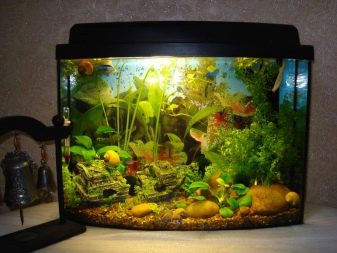
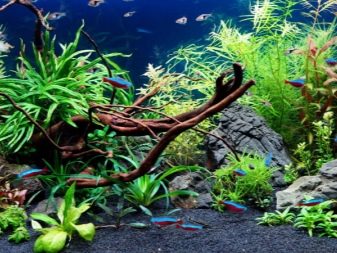
A few more nuances:
- red neons need both shelters and free sites;
- the most rational choice is a densely planted aquarium with a free center;
- the volume of the vessel does not have to be large - for 7 individuals, 60-70 liters of water is enough.

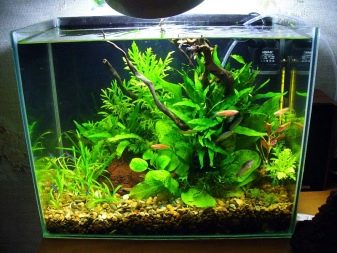
Feeding
This breed of fish does not require any very complex nutrition. You can give live, and ice cream, and even synthetic food. But keep in mind that the mouth of the red neon is small. Therefore, all products must be divided into as small portions as possible. The preferred feed is tuber and bloodworm.
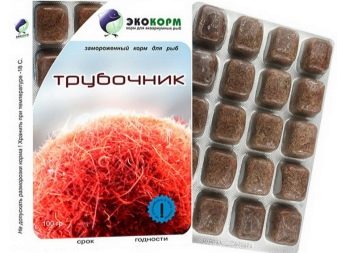
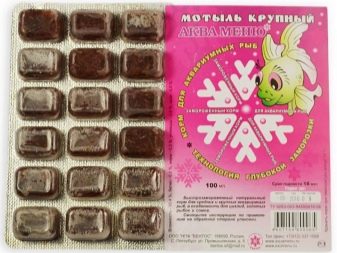
The diet should be varied, because both general health and the characteristic bright colors of the fish directly depend on it. You can not give only one type of food for a long time. Especially bad is the abuse of daphnia and dried gammarus.
Of branded prepared feeds, Tetra products are recommended. TetraMin is made from 40 or more types of quality raw materials. In the feed lay everything that is necessary for the full development.Slowly submerging flakes are designed to feed fish at different levels of the aquarium. Take a closer look at the slowly sinking Tetra Micro Pellets. This type of feed is also balanced in composition and easy to digest.




Sexual differences and reproduction
Pronounced dimorphism is characteristic only after the final growth of neon. It is believed that males neon outwardly slimmer. Breeding this breed is very difficult even for experienced aquarists. In any case, you will have to start a separate aquarium for spawning. It supports the following conditions: a hydrogen index from 5 to 5.5, the most soft water (at a level of up to 3 dGH maximum).
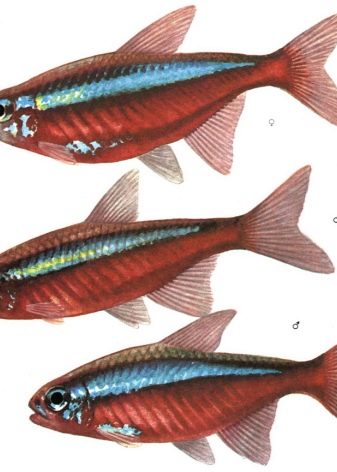
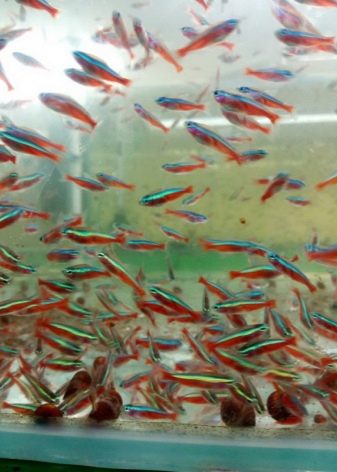
Spawning pond must be filled with plants with medium-sized foliage. It is on these plants that caviar will be laid. Lighting such an aquarium should be minimized. The upper tier of water should be filled with floating plants.
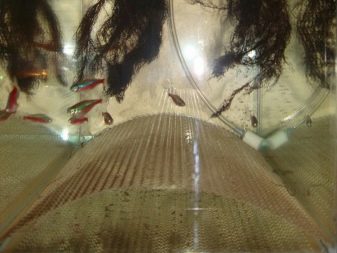
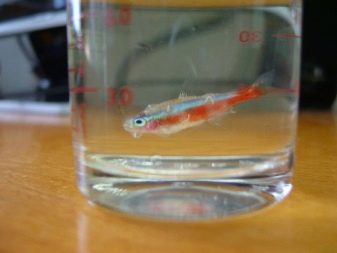
Important: adults can eat their own masonry, so they will have to be removed immediately from the aquarium.
It takes about 24 hours to hatch the larvae. After about 72 hours, she begins to swim. At this point, the fry need to be given an egg yolk and a microworm. The recommended capacity of the spawning aquarium is from 10 to 20 liters. At the bottom should lay a separation network.

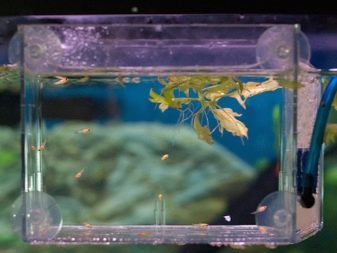
As soon as feeding begins, spawning grounds should be equipped with sprayers operating in the mode of weak blowing. Systematically, without sharp jerks, the water hardness is increasing. This is extremely important for the full formation of fish. When preparing to breed neon, it is worth taking old water and disinfecting it with ultraviolet light. Producers should be kept at a temperature no higher than 23 degrees and fed plentifully, and in the last 24 hours before transferring to a spawning aquarium, food should not be given.
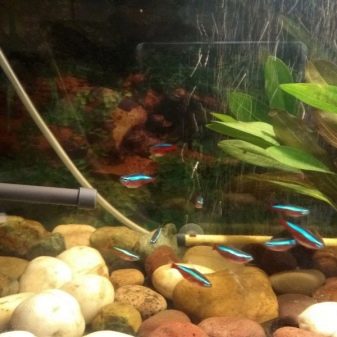

In some cases, spawning is delayed. Even professional biologists cannot foresee everything. If the clutch does not appear, you must immediately return the fish to the main aquarium. A second attempt is made after 3-5 days. In spawning grounds, neons are not fed in principle.
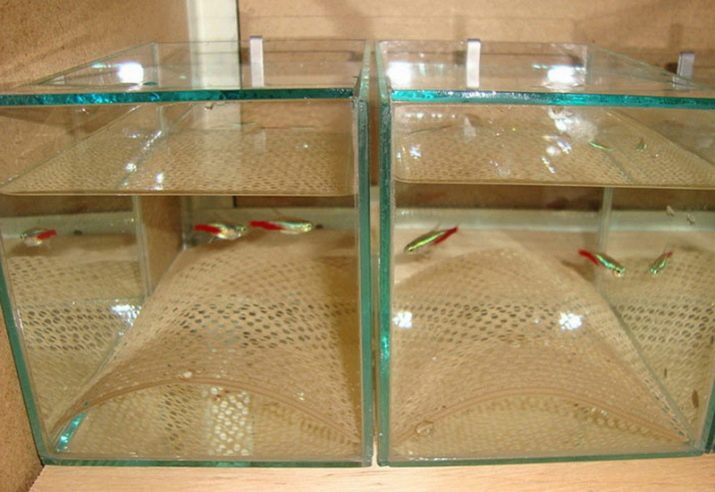
For information on how to keep and breed red neon fish, see the next video.
